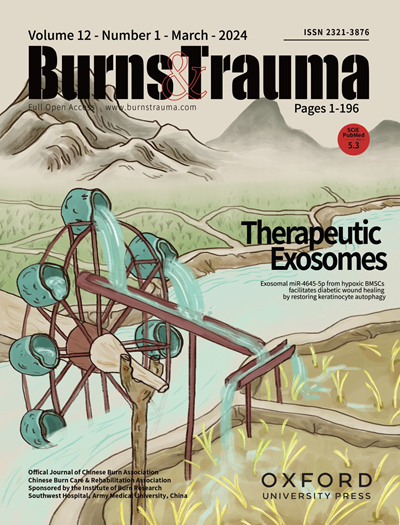Neutrophil extracellular traps in sepsis: Trade-off between pros and cons
IF 9.6
1区 医学
Q1 DERMATOLOGY
引用次数: 0
Abstract
Sepsis, a life-threatening syndrome driven by dysregulated immune responses to infection, presents significant global health challenges with high mortality rates. Neutrophil extracellular traps (NETs), composed of DNA and antimicrobial proteins, play a dual role in sepsis pathogenesis. While NETs trap pathogens and enhance immune responses via antimicrobial activity and immune cell activation, their overproduction exacerbates tissue damage, coagulopathy, and organ dysfunction. This review explores the mechanisms of NET formation, including suicidal, vital, and noncanonical NETosis, and their regulation through pattern recognition receptors, complement systems, and chemokine signaling. The interplay between NETs and immune cells—such as macrophages, T cells, and platelets - is highlighted, emphasizing NETs' role in both pathogen clearance and inflammatory injury. Excessive NETs contribute to sepsis-associated coagulopathy by activating platelets and damaging endothelial cells, while histones and proteases within NETs mediate cytotoxicity. Emerging therapeutic strategies targeting NETs, such as DNase, PAD4 inhibitors, and anti-inflammatory agents, show promise in preclinical studies but face clinical challenges due to their dual roles and off-target effects. Balancing NETs' protective and pathological functions remains critical for sepsis management. This review aims to provide a comprehensive understanding of NETs in sepsis, offering insights for future research and clinical applications.脓毒症中的中性粒细胞胞外陷阱:利弊权衡
败血症是一种危及生命的综合征,由对感染的免疫反应失调引起,是一种具有高死亡率的重大全球健康挑战。中性粒细胞胞外陷阱(NETs)由DNA和抗菌蛋白组成,在脓毒症的发病机制中起双重作用。虽然NETs通过抗菌活性和免疫细胞活化捕获病原体并增强免疫反应,但它们的过量生产加剧了组织损伤、凝血功能障碍和器官功能障碍。这篇综述探讨了NET的形成机制,包括自杀、生命和非典型的NETosis,以及它们通过模式识别受体、补体系统和趋化因子信号传导的调节。net与免疫细胞(如巨噬细胞、T细胞和血小板)之间的相互作用被强调,强调了net在病原体清除和炎症损伤中的作用。过量的NETs通过激活血小板和破坏内皮细胞而导致败血症相关的凝血功能障碍,而NETs中的组蛋白和蛋白酶介导细胞毒性。新兴的针对NETs的治疗策略,如DNase、PAD4抑制剂和抗炎药,在临床前研究中显示出希望,但由于其双重作用和脱靶效应,面临临床挑战。平衡神经网络的保护和病理功能对于脓毒症的管理仍然至关重要。本综述旨在全面了解NETs在败血症中的作用,为未来的研究和临床应用提供见解。
本文章由计算机程序翻译,如有差异,请以英文原文为准。
求助全文
约1分钟内获得全文
求助全文
来源期刊

Burns & Trauma
医学-皮肤病学
CiteScore
8.40
自引率
9.40%
发文量
186
审稿时长
6 weeks
期刊介绍:
The first open access journal in the field of burns and trauma injury in the Asia-Pacific region, Burns & Trauma publishes the latest developments in basic, clinical and translational research in the field. With a special focus on prevention, clinical treatment and basic research, the journal welcomes submissions in various aspects of biomaterials, tissue engineering, stem cells, critical care, immunobiology, skin transplantation, and the prevention and regeneration of burns and trauma injuries. With an expert Editorial Board and a team of dedicated scientific editors, the journal enjoys a large readership and is supported by Southwest Hospital, which covers authors'' article processing charges.
 求助内容:
求助内容: 应助结果提醒方式:
应助结果提醒方式:


